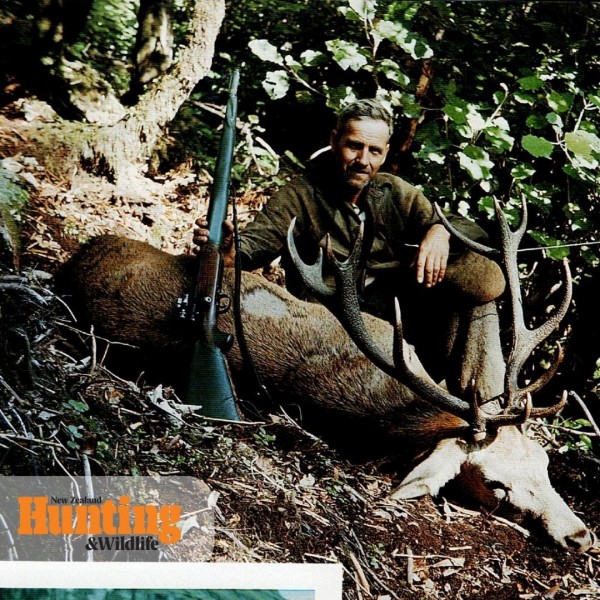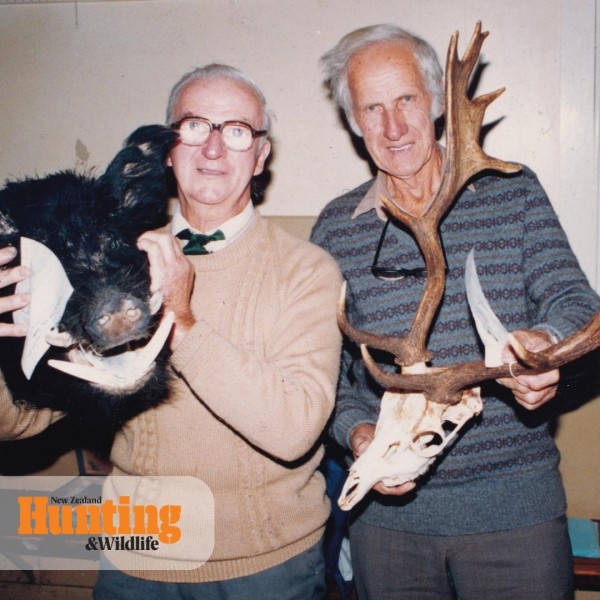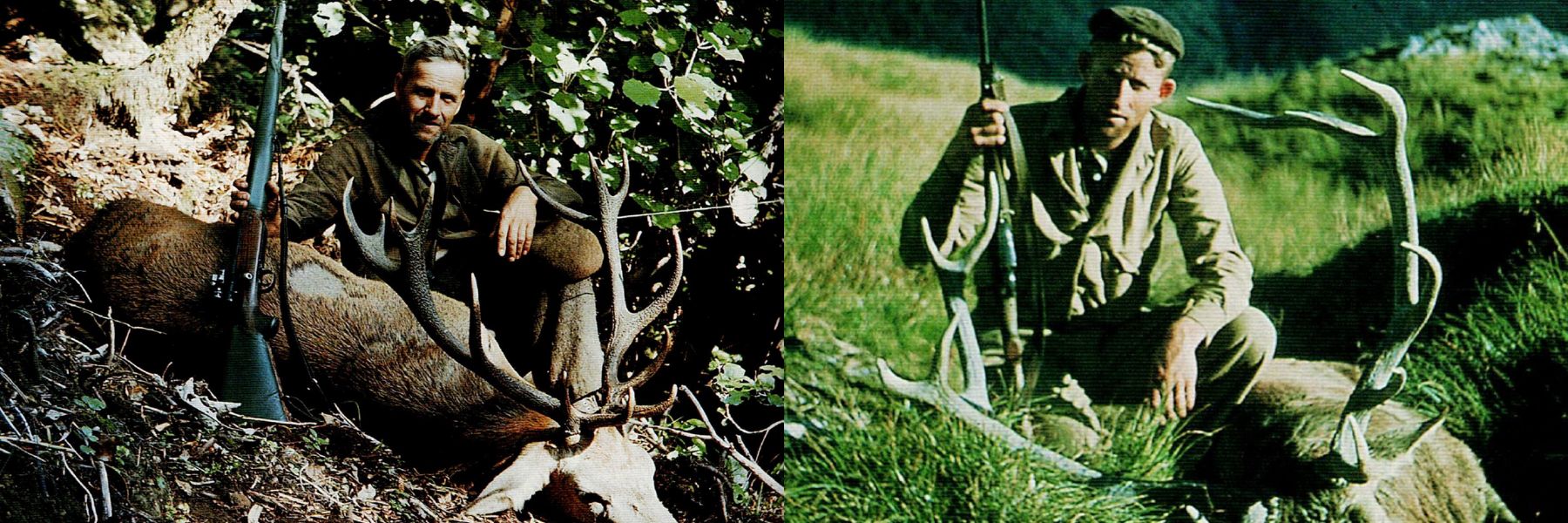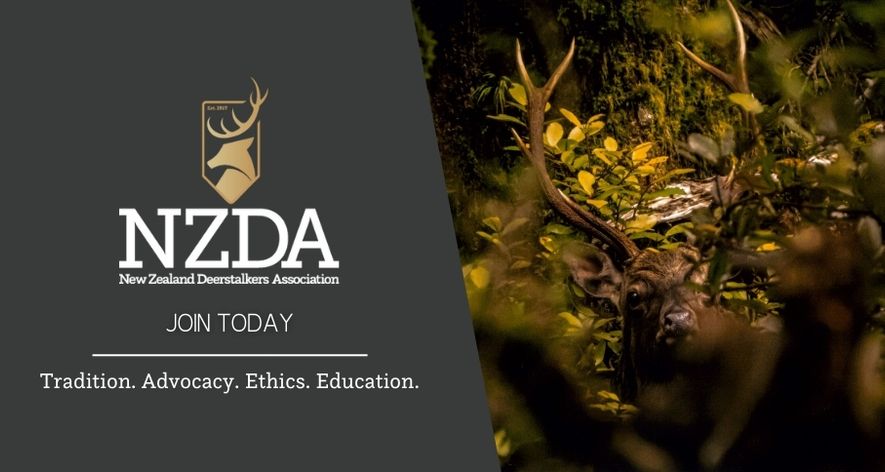HISTORY OF THE DOUGLAS SCORE
27 August 2023
Hunting and Wildlife Magazine - Autumn Issue 220
Words By: Brian Witton
The Douglas Score came about when Norman Douglas joined the Home Guard during World War II. In a questionnaire he filled out, he mentioned he knew about leatherwork-tanning and making harnesses and boots. As a result, one of the Home Guard officers, Alan McDonald, asked Norman to teach him the skills of the craft. ‘He wanted to know how to tan leather and in process of doing that he saw some of the red deer heads I was bringing home that I’d shot during the war when I’d managed to sneak off when the cows were dry. He wanted to know what the best heads amongst them were, and I didn’t know. I said this one is was heavier than that one and this one was evener than that one, and this one was bigger, and all this sort of thing. Alan said to me that one ought to be able to judge them as you would a sheep at a show. He was a farmer and had sheep. He said you should be able to give them marks, say up to 10 for the top tines, and the same sort of idea for length and spread, then you add it all up, just the same as they do at the show for sheep. But I said if you did it that way, it would only be an estimation, whereas I think you could actually measure a deer head.’
The only published information Norman could find was Rowland Ward’s Records of Big Game (London, 1928); and NZDA Bulletin Number 9, which describes methods for measuring length, spread, span, and beam. ‘That’s all I had to work on.’
Alan continued to encourage Norman to find a system. ‘One wet day I got going on it and I became very interested. I had no way of measuring tine lengths and I was sure that tines had to be measured because one of things they’d ask you when you had been deerstalking was: ‘How many points have you shot.’ Unfortunately, point numbers do not tell you much. A tine can be an inch long or 10 inches long or, like the bez tine on a trophy in Norman’s house, 16 inches long. Norman said it was the length of the tines that gave them their value. ‘Long tines are usually good tines and very short ones are poor ones. It is obvious that the poor ones are pulling down the value of your trophy.’
Norman eventually discovered that by measuring to the centre of the beam on the outside was the easiest way around the problem, as well as being accurate. He finalised his formula for measuring red deer heads just as World War II came to an end.
The Waikato Branch of NZDA of which Norman was a founding member, was the first to use the system on the 25th of June 1949.
Norman’s comment was, ‘June 1949; asked to judge the Waikato competition. Did it by Douglas Score. Caused quite a stir. Ken Miers was there and took a copy of the abridged score card I was using there.’ Over the ensuring years other Branches also adopted it.
Its first appearance in print was when Norman published a series of articles for The New Zealand Fishing and Shooting Gazette, April 1949 to 1950. At the NZDA conference on the 2nd of August 1958 the Douglas Score was formally adopted for use by the Association. However, it only applied to the measurement system published to that date, i.e., Antlered species, (Red deer, Wapiti, Sambar, Sika, Rusa Fallow, and Whitetail). Norman compiled the 1st Edition of the Douglas Score handbook on behalf of NZDA in 1959 and this was published in the same year by NZDA.
A remit from the National Executive to include the horned species and pig tusks at the 1960 conference was not successful. The remit for horned species being lost and that for pig tusks being referred back to National Executive for further consideration. However common sense prevailed, and the entire Douglas Score as printed in the 1st Edition of the handbook was eventually approved for use by the Association.
1960 saw the introduction of approved Douglas Score measurers. The first Douglas score approved measurers certificate was made out to Mr C.A. (Mac) Moore of Katikati, on the 9th of June 1960. This was simply a written note of approval at his suggestion. The idea was then extended, and the New Zealand Deerstalkers Association produced an artistic card on which the various species of big game animals concerned were named for which the applicant was approved as a measuring steward.
The scoring system did however have its detractors. Quote by Norman Douglas, Wildlife magazine September 1982, issue 71. ‘The system is simple and easy to use, but there have been the critics and knockers over the years.’ Norman always had a common-sense answer to them. He devised the system and made the rules for it and they must always be followed. Norman was made a national life member of NZDA at the 1978 conference to a standing ovation. Before he passed away on the 14th of January 1989, he transferred the ownership and copyright of the Douglas Score to his son Murray who still retains it. Norman’s wife Lorna gave Roy Larritt authority to act on behalf of the family in the matter of the Douglas Scoring system from the 1st of March 1989. Roy diligently defended it and the principals and guidelines as printed in the handbooks until his death on the 1st of March 2004.

1954 in the central North Island, Norm Douglas, using a military P.14 .30-06 converted to a sporter shot this 13-point red. He was an accomplished stalker who took a number of trophy heads which included a magnificent Fallow buck in the Pond Burn, a tributary of the Mararoa in 1957, which scored 238 ¼ DS.
The Douglas Score Handbook Trust was set up on behalf of the Douglas family at a seminar in Hamilton in 1994. The Trust consisted of three members. Max Street of the NZ Bow Hunters society, Ray Lane NZDA, and Roy Larritt NZDA. Roy presented a draft for discussion. The trust was responsible for the printing of 500 copies of the 2nd Edition of the Handbook in July 1996. Murray Douglas took over the ownership of the trust and accounts in 2004. In September 2004 Murray Douglas set up a Douglas Score panel of six members to carry on with Roy's work. Those members were, Ron Bevarge, NZDA; Dick Holmes, NZDA; Kevin Lowe, NZ Bow Hunters society; Tony Hawkins, NZ Bow Hunters society; Vern Pearson, NZDA; and Ken Barrow, a former NZDA measurer living in Australia. At a later date Bruce Banwell joined the panel. The panel continued with Roy's work but was short lived and was disbanded by Murray after the 2006 NZDA conference in Wellington.
In April 2012 a new panel was set up by Murray and consists of three members acting as an independent group of custodians. These members are Brian Witton of Auckland, custodian; Vern Pearson of Taupo, assistant custodian; Mark Sarjeant of Hamilton, assistant custodian. The duties as set out by Murray are as follows.
- Follow, promote, use and protect the Douglas Score method as published in the Douglas Score handbooks
- Assist, liaise, advise and direct others in the maintenance, protection and consistency of the measuring standards and Trophy record history.
- Provide leadership and communication of appropriate scoring methodology.
- Administrative duties appropriate to achieve the above
- Any Douglas Score training guide or publication other than the already published three editions of the Douglas Score handbooks directing or advising the appropriate use of the Douglas Score must be prior approved by the copyright holder of the Douglas Score.
The custodians will endeavour to carry out these duties for the future consistency and unaltered use of the system. Through the use of the hand books the Douglas Score has served NZDA and the NZ Bow Hunters Society admirably and will continue to do so into the future no matter how big or complicated the trophy. It is also used extensively in Australia.
References: Philip Holden (1987), The Deerstalkers

Jack Dillon (L) and Norm Douglas scoring heads. Jack Dillon served on the National Executive for 12 years and was President for 1964 and 1965.




